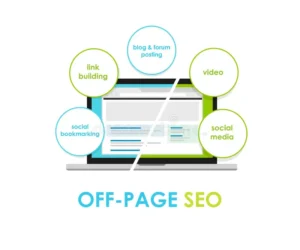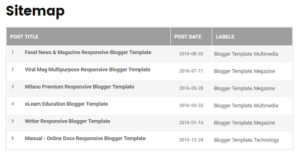Introduction
In the vast world of digital marketing, Pay Per Click (PPC) stands out as one of the most powerful tools for driving traffic, generating leads, and increasing sales. Whether you are a small business owner or a large corporation, understanding pay per click in digital marketing is essential for maximizing your online presence and achieving your business goals.
PPC is a form of online advertising where advertisers pay a fee each time their ad is clicked. It’s a way of buying visits to your site, rather than earning them organically. This detailed guide will explain everything you need to know about PPC, its benefits, types, strategies, tools, and how to launch a successful PPC campaign.
What is Pay Per Click (PPC) in Digital Marketing?
Definition of PPC
Pay Per Click (PPC) is an internet advertising model used to direct traffic to websites, in which an advertiser pays a publisher (such as Google or Facebook) when the ad is clicked.
How PPC Works
- Advertisers create ads targeting specific keywords or audience demographics.
- Ads are displayed on search engines, social media platforms, or websites.
- Advertisers only pay when someone clicks on their ad.
- The effectiveness of PPC is measured through metrics like Click-Through Rate (CTR), Cost Per Click (CPC), and Conversion Rate.
Importance of PPC in Digital Marketing
- Immediate Results: Unlike SEO, PPC delivers instant visibility.
- Targeted Advertising: Reach specific audiences based on interests, demographics, location, and more.
- Cost Control: Set budgets and adjust spending according to performance.
- Measurable Performance: Track every aspect of your campaign with analytics tools.
- Scalability: Easily scale your campaigns based on results.
Types of PPC Advertising
Understanding different types of PPC advertising will help you choose the best approach for your business.
1. Search Ads
- Displayed on search engine results pages (SERPs).
- Targeted through keywords relevant to user queries.
- Best for driving high-intent traffic.
2. Display Ads
- Visual ads displayed across a network of websites.
- Effective for brand awareness and remarketing.
3. Social Media Ads
- Ads placed on platforms like Facebook, Instagram, LinkedIn, Twitter, and TikTok.
- Target audiences based on interests, behaviors, demographics, and more.
4. Shopping Ads
- Product-based ads displayed on search engines.
- Highly effective for e-commerce websites.
5. Video Ads
- Ads displayed on platforms like YouTube or social media.
- Effective for engaging users with visual content.
6. Remarketing Ads
- Target users who have previously visited your website.
- Helps increase conversion rates by re-engaging potential customers.
How to Create a Successful PPC Campaign
Launching a successful PPC campaign involves a series of strategic steps.
Step 1: Define Your Goals
Determine what you want to achieve, such as increasing website traffic, generating leads, or boosting sales.
Step 2: Conduct Keyword Research
Use tools like Google Keyword Planner, Ahrefs, and SEMrush to find relevant keywords.
Step 3: Choose the Right Platform
Select the appropriate platform for your campaign, such as Google Ads, Facebook Ads, or LinkedIn Ads.
Step 4: Create Compelling Ads
Craft engaging ad copy with clear CTAs (Call-to-Actions) and relevant visuals.
Step 5: Set Your Budget
Determine how much you want to spend daily or monthly on your PPC campaigns.
Step 6: Launch Your Campaign
Set your campaign live and monitor its performance regularly.
Step 7: Analyze and Optimize
Use analytics tools to measure performance and adjust your strategy as needed.
Tools for PPC Management
Several tools can help you optimize and manage your PPC campaigns effectively.
Popular PPC Tools
- Google Ads: Best for search and shopping ads.
- Facebook Ads Manager: Ideal for social media advertising.
- Ahrefs: Keyword research and competitor analysis.
- SEMrush: Comprehensive SEO and PPC analysis tool.
- HubSpot: For tracking and analyzing PPC campaigns.
Best Practices for PPC Advertising
- Use Relevant Keywords: Optimize your ads with keywords that match user intent.
- Optimize Landing Pages: Ensure your landing pages are relevant, fast, and mobile-friendly.
- Utilize Negative Keywords: Exclude irrelevant traffic to save budget.
- Monitor Performance Metrics: Regularly analyze CTR, CPC, conversion rates, and ROI.
- Test and Iterate: Continuously improve your ads through A/B testing.
Conclusion
Understanding pay per click in digital marketing is essential for businesses aiming to drive traffic, increase leads, and improve revenue. By implementing the right strategies, tools, and best practices, you can create a successful PPC campaign that delivers measurable results.
Stay updated with the latest trends and optimize your PPC campaigns to stay ahead of the competition. Whether you are a beginner or an experienced marketer, mastering PPC will provide you with a powerful tool to achieve your business objectives.







